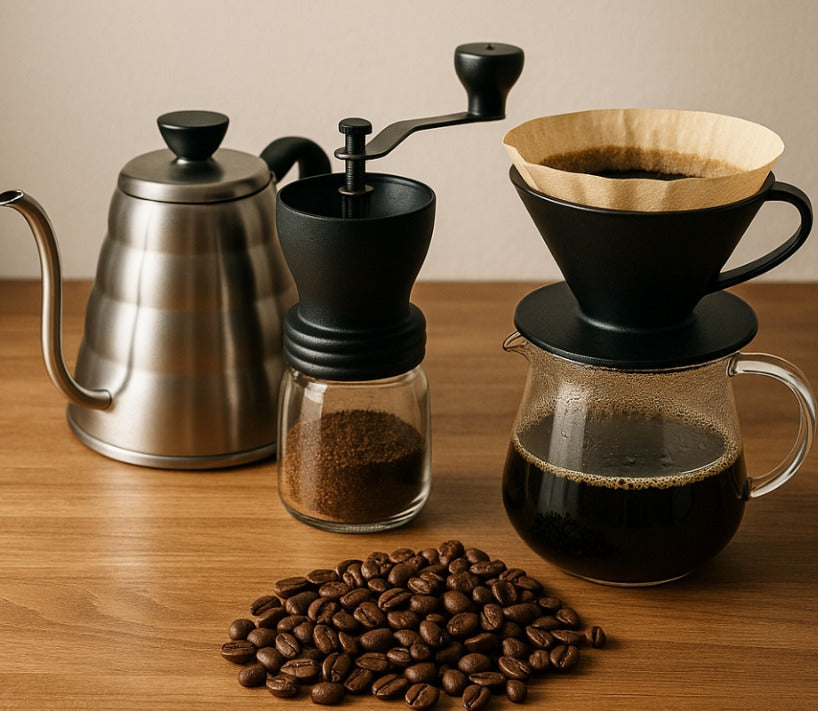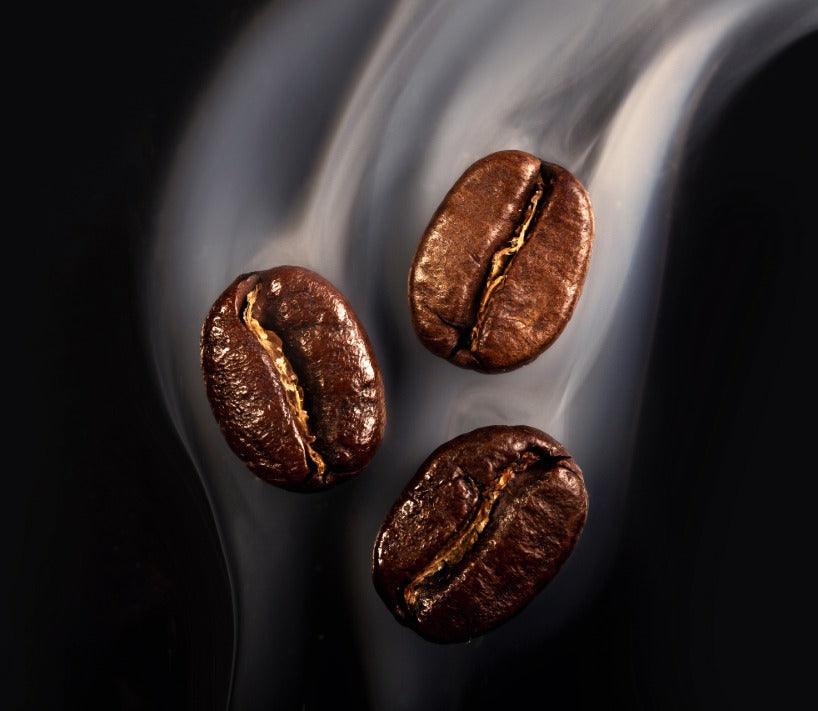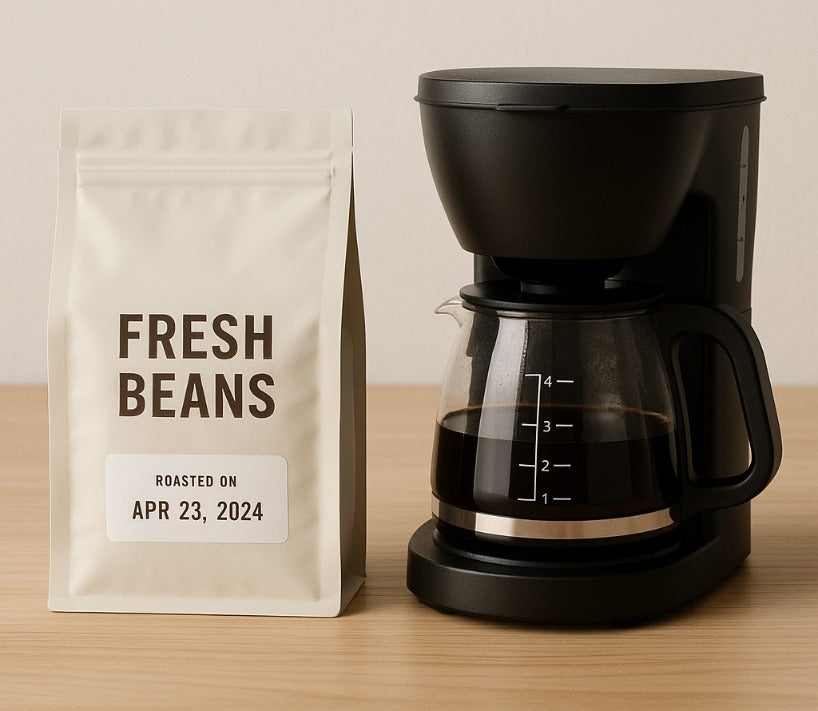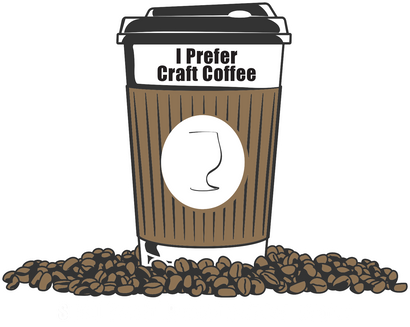Guatemalan Velvet: Why My 87-Point Beans Sip Like Silk
May 20, 2025 4 min read
Guatemalan Velvet: Why My 87-Point Beans Sip Like Silk
(A deep dive into what makes Guatemala’s coffee the best tasting whole bean coffee you’ll meet this week)
Wait… why is this mug so dang smooth?
Picture me at 6 a.m., hair looking like a derailed trolley, fumbling for the kettle. One sip of my Guatemalan pour-over and—boom—my taste buds throw a block party. No harsh bite, no “why-did-I-just-lick-a-battery” acidity. Just velvety chocolate, a whisper of citrus, and a hug of toasted almond.
Friends keep asking, “Why does your Guatemalan coffee taste like silk pajamas for my tongue?” Today I’m spilling the (coffee) beans, so buckle in: we’re about to nerd out on SCA scores, volcano soil, low-acid magic, and the wonders of air-roasting—so you can brew the best craft coffee at home without guessing.
The 4 Invisible Forces Behind Guatemala’s “How-Is-This-So-Smooth?!” Factor
1. Altitude, Volcanoes & Microclimates—AKA Mother Nature’s Flavor Lab
Guatemala’s best coffee farms perch between 1 400 and 2 000 meters. Up there, cooler nights slow cherry ripening, letting sugars party longer inside the bean. Add mineral-rich volcanic basalt and you get a flavor palette dripping with cocoa, stone-fruit, and caramel. It’s the same altitude sweet spot that delivers good coffee to drink black—no milk required.
Geek moment: Higher elevation generally raises acidity and sweetness. But in Guatemala, thick cloud cover and balanced rainfall mellow that acidity into a gentle, low-acid profile. Your stomach will thank you later.
2. The Q-Grading Mic Drop: An 87-Point Score in Plain English
Ever wondered why pros obsess over a “Q score”? The Specialty Coffee Association (SCA) uses certified Q-graders (think sommeliers for beans) to score aroma, flavor, aftertaste, body, balance, and more on a 100-point scale:
-
80–84.99 = Very Good
-
85–89.99 = Excellent
-
90+ = Presidential Unicorn Territory
At 86, Guatemalan Huehuetenango lots leap into “Excellent” status—just 3–5 % of the global harvest. That scarcity is why coffee nerds Google “best specialty coffee online” at 2 a.m. hoping to snag a bag before it’s gone.
3. Low-Acid Genetics + Washed Processing = Stomach-Friendly Cup
Many Central American arabicas lean bright (great for espresso but sometimes too zesty for delicate tummies). Guatemalan cultivars—Bourbon, Caturra, Catuai—tend toward softer malic acidity (think crisp apple, not sour lemon). Pair that with meticulous washed processing (removing fruit mucilage before drying), and voilà: a cup so clean even self-proclaimed “I-usually-drink-tea” folks nod in approval. Perfect for best coffee for non coffee drinkers needing a gentle gateway brew.
4. Air-Roasting: How I Keep Nuance Alive (Yes, Even in Darker Roasts)
Most roasters use a drum where beans tumble against hot metal. Great method—unless you scorch surface sugars before internal moisture escapes, muting subtle flavors. My fluid-bed air roaster blasts 500 °F air around each bean like a tiny coffee tornado:
-
Even Heat Transfer – No smoky drum surfaces = purity of origin flavors.
-
Precise Development – I track bean temperature each second; caramelize sugars, halt before bitterness crashes the party.
-
Shorter Roast Times – Less exposure = preserved aromatics you’d normally lose.
Result? You still taste dried cherry and cocoa butter in a medium-dark profile—making Guatemalan a candidate for best espresso beans and velvety French-press mornings.
Flavor Roadmap: What You’ll Actually Taste
| Roast Level | Primary Notes | Secondary Nuances | Mouthfeel |
|---|---|---|---|
| Light | Milk chocolate, orange zest | Honey, hazelnut | Creamy-light |
| Medium | Cocoa nib, red apple | Toffee, almond | Silky-round |
| Medium-Dark | Dark chocolate, brown sugar | Praline, subtle smoke | Velvety-full |
Brewing Tips to Unlock Peak Smoothness at Home
-
Grind Size Goldilocks – Use a burr grinder. Medium-fine for V60; medium-coarse for Chemex; fine for espresso. Uniformity prevents bitter fines & sour boulders.
-
Water Rule – 195-205 °F (90-96 °C). Too hot = bitter; too cool = under-extracted.
-
Ratio Reminder – 1 g coffee to 16 g water (about 22 g for a 350 ml mug). Adjust ±5 % to taste.
-
Bloom Dance – Pre-wet grounds 30 seconds to release trapped CO₂ (fresh beans puff like a soufflé—visual proof of that roast-date freshness).
-
Total Brew Time – V60: 2:45–3:15; French press: 4 minutes; Espresso: 25–30 seconds.
Follow these and you’ll swear you’ve got top coffee delivered by a barista fairy godparent.
Keyword-Snack FAQ
“Where can I buy fresh coffee beans near me if I live nowhere near Guatemala?”
Check local specialty cafés—but if that fails, buy specialty coffee online from roasters who publish roast dates and lot info. Freshness > geography.
“Is Guatemalan the best small batch coffee for gifting?”
Absolutely. Its crowd-pleasing sweetness makes it a killer gift for coffee lover relatives. Whole beans = versatile coffee beans as a gift whether they brew espresso or drip.
“I need low-acid but flavorful. Good option?”
Yes! Its mellow acidity ranks it among the best coffee to buy online for sensitive stomachs while keeping complexity.
“Best espresso beans recommendation?”
Medium-dark Huehuetenango or Antigua lots excel—rich crema, cocoa backbone, fruit lingering.
“Can a non-coffee drinker enjoy this?”
Guatemalan’s gentle profile makes it best coffee for non coffee drinkers dipping a toe into arabica waters.
What You Gain from Knowing All This
By now you’ve:
-
Cracked the mystery behind that shockingly smooth mug.
-
Learned why an 86-point Q score turns heads on cupping tables worldwide.
-
Discovered how volcanic terroir + washed processing + air-roasting create a gentle, flavor-packed brew you can confidently serve black.
-
Snagged brew ratios that will make your next morning feel like a café stay-cation.
Armed with this intel, you’ll breeze past generic supermarket bags and zero in on best craft coffee online listings that showcase roast dates, origin transparency, and (bonus!) air-roast curves. Next time someone asks why your coffee tastes like melted velvet, you can flex your new knowledge—no snobbery required.
So go forth, fellow bean explorer, and brew your Guatemalan cup with pride. Whether you’re treating yourself, hunting presents for coffee lovers, or curating the best craft coffee at home lineup, you now wield the power to decode a label, judge a score, and roast-date-stalk like a pro. Drink up, stay smooth, and remember: life’s too short for dull coffee.
Also in Best Coffee To Buy Online Education

Brewing The Best Coffee at Home: Stop Waiting in Line
November 03, 2025 4 min read
Learn Brewing The Best Coffee at Home with a quick Proof → Promise → Plan system: choose fresh, roast-dated beans, use a simple 1:16 recipe at 200°F, and lock a 4–6 minute routine that beats the drive-thru on taste, time, and cost.

Best Tasting Coffee At Home: Stop Buying “Deals,” Start Buying Value
November 02, 2025 4 min read
Want the Best Tasting Coffee At Home? Skip old ‘deal’ beans. Use fresh, high-scoring, air-roasted coffee and a simple 1:16 plan. This guide shows proof, a clear promise, and a step-by-step plan to order smart, brew better, and enjoy sweeter, cleaner cups—daily.

Best Coffee To Make At Home: Fresh Beans, Simple Plan
October 31, 2025 4 min read
Learn the Best Coffee To Make At Home with a tiny, repeatable system: pick fresh, high-scoring, roast-to-order beans; brew at a simple 1:16 ratio; fix cups with one change at a time. Includes a comparison table, freshness rules, and beginner-friendly FAQs.
